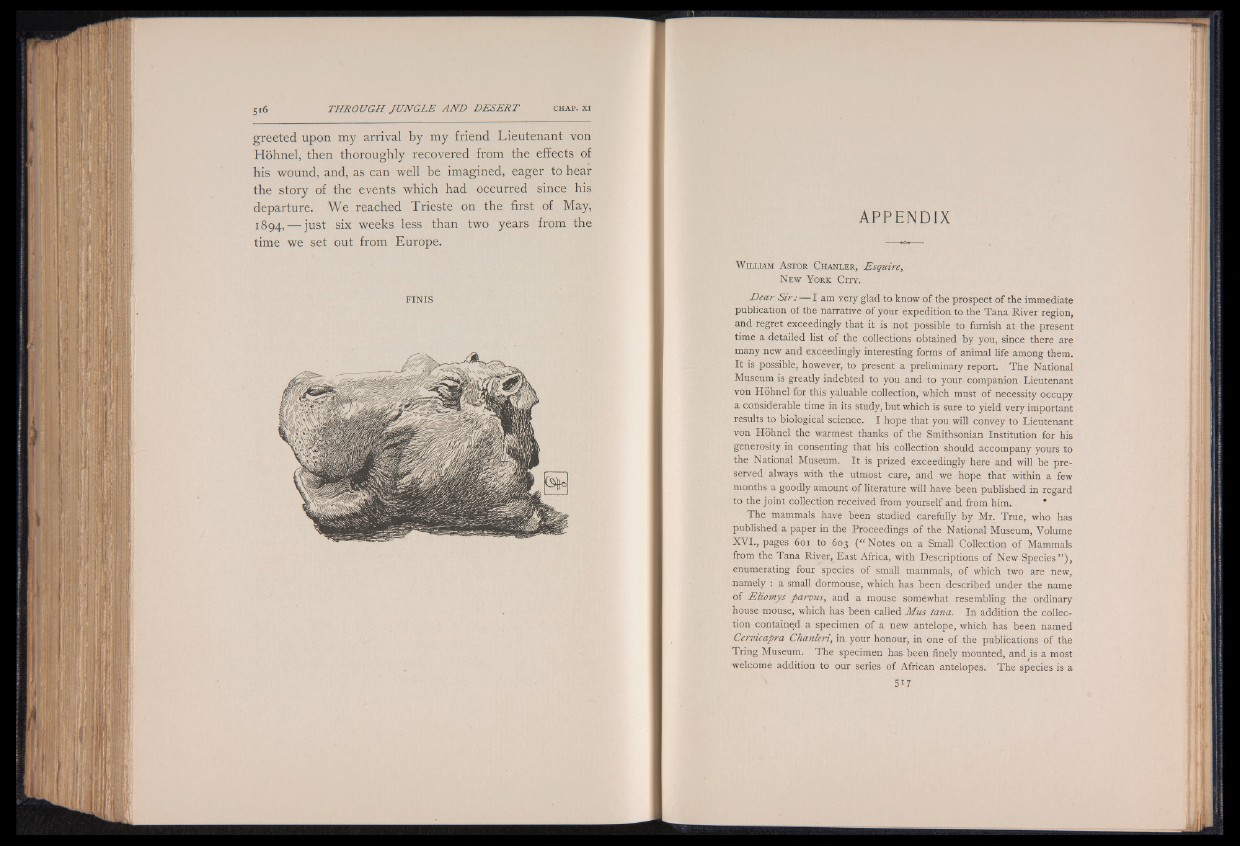
greeted upon my arrival by my friend Lieutenant von
Hohnel, then thoroughly recovered from the effects of
his wound, and, as can well be imagined, eager to hear
the story of the events which had occurred since his
departure. We reached Trieste on the first of May,
1894, — just six weeks less than two years from the
time we set out from Europe.
FINIS
A P P E N D I X
W il l iam A s to r C h a n l e r , Esquire,
N ew Y o r k C it y .
Dear Sir; — I am very glad to know of the prospect of the immediate
publication of the narrative of your expedition to the Tana River region,
and regret exceedingly that it is not possible to furnish at the present
time a detailed list of the collections obtained by you, since there are
many new and exceedingly interesting forms of animal life among them.
It is possible, however, to present a preliminary report. The National
Museum is greatly indebted to you and to your companion Lieutenant
von Hohnel for this valuable collection, which must of necessity occupy
a considerable time in its study, but which is sure to yield very important
results to biological science. I hope that you will convey to Lieutenant
von Hohnel the warmest thanks of the Smithsonian Institution for his
generosity in consenting that his collection should accompany yours to
the National Museum. It is prized exceedingly here and will be preserved
always with the utmost care, and we hope that within a few
months a goodly amount of literature will have been published in regard
to the joint collection received from yourself and from him. *
The mammals have been studied carefully by Mr. True, who has
published a paper in the Proceedings of the National Museum, Volume
XVI., pages 601 to 603 (“ Notes on a Small Collection of Mammals
from the Tana River, East Africa, with Descriptions of New Species” ),
enumerating four species of small mammals, of which two are new,
■namely : a small dormouse, which has been described under the name
of Ehomys parvus, and a mouse somewhat resembling the ordinary
house mouse, which has been called Mus tana. In addition the collection
contained a specimen of a new antelope, which has been named
Cervicapra Chanleri, in your honour, in one of the publications of the
Tring Museum. The specimen has been finely mounted, and is a most
welcome addition to our series of African antelopes. The species is a
5i 7